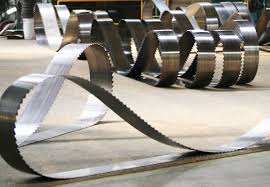Tech News
5 Types of Caster Wheels
Casters are wheel mechanisms that can be attached to an object to give it better maneuverability. The range of motion you want your equipment or furniture to have will determine which type of caster you choose. Because casters come in many different forms, it’s essential to know the differences between them.
What Is a Caster?
The main components of a caster are the wheel, the plate, and the fork. These three components are held together by a kingpin. Caster wheels can be made from various materials, including steel, cast iron, rubber, resin, and combinations of different materials, such as glass and nylon.
Rigid Casters
Rigid casters consist of a wheel and a stationary fork, which is the component that attaches the wheel to the equipment. A rigid caster wheel prevents an object from moving in any direction outside of a straight line. For example, some shopping carts have rigid caster wheels, which is why their wheels don’t turn a full 360 degrees.
Braking and Locking Casters
You can find braking and locking casters on certain types of carts or mobile medical equipment, such as an X-ray machine. These casters have locking mechanisms that can be engaged or released using either the hand or foot. Locking the wheels prevents equipment from moving unintentionally, which could lead to injury or damage.
Industrial Casters
Industrial casters are ideal in situations where the vehicle they are attached to is intended to carry large loads. For example, a dolly in a warehouse can hold thousands of pounds of weight. Industrial casters are designed to support that much weight without breaking.
Swivel Casters
A swivel caster rotates 360 degrees, which provides better maneuverability of an object. These are ideal for desk chairs, strollers, and other furniture and equipment that you may want to be able to move in all directions.
Kingpin-less Casters
All casters have a kingpin, which is the piece that holds all of the other components together. Kingpins can fail over time, though. Kingpin-less casters don’t use a kingpin, which removes the risk of potential failure. These casters work well for items you want to ensure won’t fail quickly, such as hospital beds.
The type of caster you choose is dependent on your preference, what the caster will be supporting, and how much weight you need the caster to bear. Not all casters are the same, so take your time deciding which caster will suit your needs the best.






